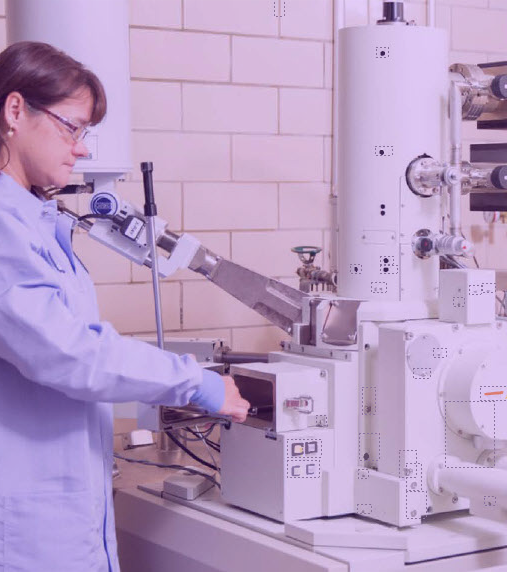Customer Story
Ascend Performance Materials

99.9%
data accuracy and massive time savings with supply chain automation achieved
3,600
employees and contractors in eight production facilities
top 60
exporters of goods in the US by volume
Introduction
Manufacturing organizations today are under increasing pressure to move faster, reduce errors and risk, and be more efficient. For a company such as Ascend Performance Materials – which produces chemicals, fibers, and plastics for the automotive, electronics, textile, and consumer industries in an effort to make safer vehicles, cleaner energy, better medical devices, smarter appliances, and longer-lasting apparel and consumer goods -reducing risk is paramount. The business impact of having bad data could be devastating, and a solid master data governance strategy to ensure clean and accurate data could very well mean the difference between success and failure.
Headquartered in Houston, Texas, Ascend has approximately 3,600 employees and contractors in eight production facilities, a technology center in the US, and worldwide sales and technology offices. The business manufactures and sells products that play an integral role in how thousands of everyday objects are made, from baby strollers to aerosol valves to spatulas -in fact, Ascend is one of the top 60 exporters of goods in the US by volume, exporting more than 25,000 containers from the US every year.
“Ascend has experienced unprecedented growth over the past several years, driven largely by our strategy to be more global and closer to our customers,” says Rod Johnson, who manages the master data governance team at Ascend as its Senior Global Data Governance Manager. “A big part of our success are our values, especially the values of being agile and customer-focused.”
To create and deliver its products, supply chain technicians, mechanics, and other employees need to be able to quickly find the data they need, and the master data governance team at Ascend has recently been making great strides to ensure this happens. The team identified three different areas in the supply chain where processes were lagging or where workflows were ripe for efficiency improvements with automation:
- The process workflow for fulfilling requests for sample materials
- The process workflow for approving and onboarding new suppliers that provide raw materials
- The process workflow for performing mass updates of requests submitted for maintenance, repair, and operations (MRO) materials
In each of these use cases, the team conducted a “Voice of the Customer” session on the front end and spent time with the internal customers involved with each process to get everyone on the same page, confirm the team had a clear grasp of the workflow, and make sure the solution to be developed, delivered, and implemented would meet their needs.
The Voice of the Customer is part of Ascend’s internal process improvement methodology, and it is employed at the outset of each project at Ascend to ensure the project’s business requirements and objectivesare addressed and met, accordingto Johnson.
For each of the areas for improvement -the sample materialsworkflow, the supplier approval workflow, and the mass update workflow – Ascend chose the Precisely Automate platform, a business process automation and data management platform with deep SAP integration capabilities, to help address the identified process problems. The following sections discuss the issues users faced in each area and how the Precisely Automate platform was used to build automated solutions to streamline processes and improve data quality and compliance.

Industry
Ascend Performance Materials
Headquaters
Houston, Texas
Industry
Chemical manufacturing
Employees
2,600 employees and 1,000 contractors
Company details
- Eight fully integrated production facilities located in North America, Asia and Europe
- Produces plastics, fibers, fabrics and chemicals used to make safer vehicles, cleaner energy, better medical devices, smarter appliances, and longer-lasting apparel and consumer goods
- Committed to safety, sustainability, and the success of customers and communities
SAP solutions
SAP ERP 6.0
Third-party solutions
The Precisely Automate Platform
“We wanted to streamline the process, reduce the number of handoffs, and make sure the entire flow and communication - from SKU creation to sales order creation - is optimized.”
LaMona Jones Senior Master Data Specialist, AscendAutomating the sample materials workflow
The order fulfillment process previously in place to support a manufacturing facility requesting sample materials from another facility required long cycle times to complete, from creating the sample stock keeping unit (SKU) in the SAP ERP system to fulfilling the order. The prior workflow process was manual with many handoffs including email, phone calls, spreadsheets, and multiple approvers adding complexity and cycle time to facilitate the transaction.
“The longest process took anywhere from a mini-mum of 14 days up to 45 days,” says La Mona Jones, Senior Master Data Specialist at Ascend. “We wanted to streamline the process, reduce the number of handoffs, and make sure the entire flow and communication – from SKU creation to sales order creation- is optimized.”
During the Voice of the Customer session, the team identified several bottlenecks and areas for process improvement. “Our old process had poor visibility, unclear requirements to the requester, a lack of communication to key stakeholders, and long lead times for an order fulfillment process to be started,” says Jones. “To be customer-focused, we wanted to make sure that our solution touched on all those critical areas.”
While critical process stakeholders were previously omitted from the workflow notification process, or only received communication after the fact, the revised process incorporates those individuals into the workflow steps. The way the process flow works now, when requesters (who are typically project managers) launch the Precisely solution’s web interface, they are prompted to answer four questions displayed one at a time to avoid overwhelming the user -and the responses determine the workflow steps and participants using underlying logic. For example, one question is whether the safety data sheet (SOS) has been created. If the answer is no, the submitted request is then routed to the project manager to fill out the SDS. Once all the requirements are gathered and the project manager approves the request, it routes to the master data team.
“From there, we process the SKU request via the Precisely Automate platform, which automates the data entry into the SAP system, and then the workflow is either routed to another department for compliance review or becomes operational,” says Jones. “But either way, a final email notification is sent to all participants involved in the workflow -from the product stewards to the transportation compliance specialists to customer service – stating the SKU is operational, and from there the request is closed. That communication is all channeled automatically through the Precisely solution, allowing us to be more agile.”
The workflow took a bout a month to develop, which included two weeks of heavy testing to ensure all the rules were working properly, followed by a series of demos and user-acceptance testing (UAT). While all users participate in UAT sessions and have training documents to turn to, the workflow includes additional assistance for individuals that might have questions while completing a step in the process. A “Need Help” checkbox function was included in the workflow that provides a high-level overview of each task for each role (i.e., requester, approver, and master data steward).
Another user-friendly feature of the process flow is how some field values, such as the reference material details, are populated for the requester by default (with override capabilities allowed). “Hundreds of attributes make up a material record, and users don’t need to look at or fill out all of those, so they can click on ‘Get material details,’ which will pull that information directly from SAP ERP into the solution,” says Jones. “Also, depending on what business segment users select, the solution will automatically populate that naming convention structure.”
The automated solution built with Precisely Automate platform has substantially decreased the process time required forfulfilling the order requests for sample materials, according to Jones. “We streamlined the number of handoffs and approvers in addition to reducing cycle time from a minimum of 14 days for an SKU to one day,” she says. “We have one flexible solution for three business segments that allows our naming conventions to be standardized and aligned across the board, even though there are various structural
differences in each segment.”
Another benefit of the solution has been a major improvement in data quality, according to Jones. “When we started this project in the last quarter of 2019, we conducted a full audit of our master data and found our data accuracy was very low,” she says.
“It took months of hard work of engaging with other stakeholders and data owners, but I can proudly say that, as of today, we are 99.9% accurate. To maintain that cleanliness and not clutter our environment with bad data, we had to build governance – and that’s what this solution offers because all our governance rules are embedded in the workflows.”
In addition to improving performance and cycle time, the master data governance team is saving even more time by not having to clean up the data. According to Johnson, the solution has not only improved master data accuracy and highlighted a significant improvement to the sample material process, but also served as an enabling component of the entire order-to-cash process, which will become commercially valuable as well when applied to commercial SKUs.

“Through automation, we’ve significantly reduced the number of manual touches. Previously, some qualifications would take up to two years, and now we’re down to most of the qualifications taking about three months, on average.”
April Hargraves Master Data Specialist, AscendAutomating the supplier approval process
The next project, automating supplier approvals, involved a Voice of the Customer session that spanned several months to iron out the process and implement the workflow. The original process to onboard new suppliers and qualify their raw materials for use by Ascend was very manual, convoluted, and lengthy, so the procurement director responsible for bringing on these suppliers requested that the master data governance team look into fixing the process, according to April Hargraves, Master Data Specialist at Ascend. “The bulk of the time on the project was spent on the front end to ensure that all bases were covered, but the automation itself was very fast to develop,” she says. “The hard work is defining your process, but that’s great too, because then you have a defined process with clear roles.”
This process also had many handoffs and emails with a single quality specialist in charge of gathering the information and managing the email communication for all the different data requests and approvals for supplier onboarding, according to Hargraves. “There was no visibility into where the vendor request was in the process or if all the approvals were gathered, and everyone would have to check with the spend manager to get that information,” she says. “It was a ton of emails and a lot of work one person had to do on top of her regular job, and it was hard for her to keep up with all of it.”
Using the Precisely Automate platform, Ascend automated the process flow for obtaining approvals and the documentation required for each manufacturing area and raw materials being qualified. At the start of the workflow, requesters (such as commodity managers) can query a vendor name, which retrieves the data from the back-end SAP system. When requesters enter information about the material, the Precisely solution provides a list of the required documentation, such as an SDS. “Now all the new suppliers follow the same approval process,” says Hargraves. “And we utilize a combination of drop-downs and rules, so requesters have some flexibility with picking the approver. Some approvers are sequential, and others are in parallel, which has been a great help in making the workflow go much faster, ensuring that requests don’t get held up waiting for an approval that’s not pertinent for the next step.”
Automated email notifications are routed to workflow participants to ensure everyone is on the same page throughout the whole process. Emails inform participants of the tasks they are expected to perform at particular points in the process – for example, entering the plant testing lab evaluation results – and reminder emails can be scheduled if tasks are incomplete. Notifications also can be sent to people who might not have a direct role in the process but need to be aware that something is coming down the pipeline. For example, engineers who work in the manufacturing area for which the materials are being qualified, and might use these materials, would be informed about the new material being qualified as well as who is working on the onboarding. “This way, they know who to reach out to if they have concerns or questions,” says Hargraves. “Automated notifications are also sent to the whole group when important milestones are reached, such as when industrial hygiene approves the supplier, which is a big step in our process.”
The Precisely Automate solution gives workflow participants visibility into the status of each onboarding process, including which steps have been completed and which remain. It also provides the ability to enter comments during the approval or add attachments for supplemental data. “Once all the approvals are collected and finalized, an email notifies everyone and includes all the attachments so they can save the documentation in their files,” Hargraves says. “They are also automatically stored for audits.” From an auditing perspective, external auditors can see that the workflow is automated and matches the written process, and internal auditors have access to the data, which saves them from having to ask for information or dig through emails to find approvals.
The automated workflow is saving a ton of time, according to Hargraves. “Through automation, we’ve significantly reduced the number of manual touches,” she says. “Previously, some qualifications would take up to two years, and now we’re down to most of the qualifications taking about three months, on average, which is really about as fast as you can get this done when plant testing is involved. Raw materials that don’t require a plant test can go through even more quickly, helping the company respond to customer needs quickly.”
Hargraves lists visibility and accountability as major benefits of using the Precisely solution. “Anyone involved in the process can see where the workflow is and have clear expectations of what is needed or expected for each task,” she says. “It forces consistency across users in different areas, and because it provides an auditable record of approvals, users are not responsible for remembering who needs to approve and which approval steps are needed – that’s automatically done for them.”

“With this workflow approval process, we have approvals, and they all proceed in parallel. No one has to wait on the next person’s approval for the request to go forward.”
Melinda Hyder Master Data Specialist, AscendAutomating mass updates for MRO requests
The last use case involved automating the updates of requests for MRO materials. Previously, this process required submitting one request for each SKU, which meant retyping duplicate information (such as requester name) from a spreadsheet into the SAP system. This manual-entry task added extra work and time to the process and created substantial potential for error.
“Some of our locations needed to have multiple materials created in a day, and they were having to submit individual requests for each of these materials that were at the same location,” says Melinda Hyder, Master Data Specialist at Ascend. “With all the excess communication and emailing back and forth, it was taking a lot of time for the approvals, and there was no visibility into the previous creation.”
Using the Precisely Automate platform, Hyder created a new workflow for requests of stock and nonstock material, which require approval when over a certain value. “With this workflow approval process, we have three approvals, and they all proceed in parallel,” she says. “No one has to wait on the next person’s approval for the request to go forward. If a material does not require approval, the request routes directly to the master data team to process. For other materials, once all the approvals are done, the request is then routed to master data to process. Once the materials are created, an email notification containing the pertinent information is pushed to the requester, approvers, and any external third party.”
The the Precisely Automate form developed for MRO material requests allows an option to enter multiple materials in a single form, leveraging Precisely’s patented SmartTable technology. Users can work in a Microsoft Excel spreadsheet – something they are very familiar with – upload that into the Precisely form, and submit the request, which is then routed to the master data team. “We receive the request with all the materials listed for processing. All materials contained in the request are then mass-processed into the back-end SAP system,” says Hyder. “Following task completion, the requester receives an email confirmation including an attached Excel listing of all the newly created SKUs. Cycle time, as well as error occurrence, was substantially improved – all in one simple request.”
A flexible and iterative approach
One of the big timesavers in developing solutions with the Precisely Automate platform, according to Jones, is the ability to reuse previously created templates and scripts from other solutions. Even those created with Automate Studio, Precisely’s Excel-to-SAP automation platform, can be converted easily for the Precisely Automate platform. “It’s just a matter of importing and exporting – as simple as changing a Microsoft Word document to a PDF,” she says. While the master data governance team members primarily use the Precisely Automate platform to automate processes, they also use Automate Studio to perform transactional updates, especially when performing data cleansing tasks.
The distinction between the different use cases really shows the flexibility of the Precisely Automate platform, according to Johnson, in that it enables users to automate a process that’s agnostic of the system – so the workflow could be tied to an SAP process or a business process outside of an SAP system. “As the business evolves, our processes often must change accordingly. As such, we need the flexibility to refine our processes rapidly to meet the business needs in this dynamic environment,” he says. “As we get more familiar with the Precisely Automate capabilities, and as they enhance the product with additional features, we will incorporate those improvements to keep our business agile and customer-focused.”

Precisely Automate Platform
Accelerate business accesses and improve your data with world-class SAP process automation